Laughing Kookaburra
The bird with the best name on the planet. The voice will be in my head forever.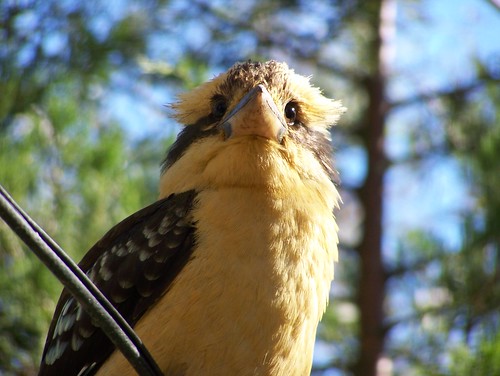
Actually saw one emerge from a termite nest on a tree once. Thought it was a little cream-colored rodent at first, then it flew off.
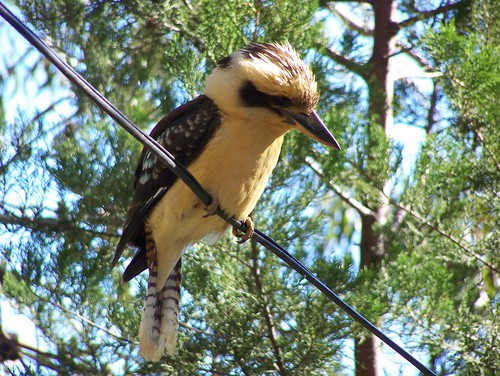
A world full of cool stuff
The bird with the best name on the planet. The voice will be in my head forever.

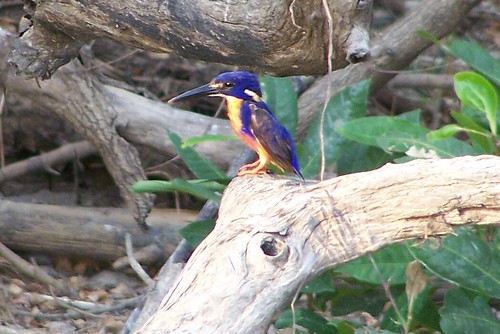
First, Pharyngula, the blog of an extra-smart and funny biologist.
And a story he linked to, saying, "It's a strange thing to care about a dog I've never met…".
Labels: dogs, links, pharyngula
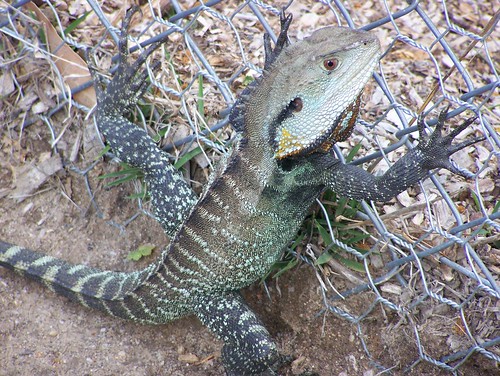
Eastern Gippsland Water Dragon, Tidbinbilla Nature Preserve, east of Canberra, October, 2006. If you're in the area, go. Very much worth it. Saw a Red-Bellied Black Snake there. Venomous. Beautiful.
The only thing I don't understand is that stripe that goes up to its ear. Took a lot of photos of the many dragons we saw, but they all had the stripe going right up to the eye, which is one of their distinguishing features. This one only went to the ear. May be a different species. Or just a freak.
Well, dang, I just found out. It's a Gippsland Water Dragon, not an Eastern. Google wins again. Here's a good shot of the Gippsland, and info.
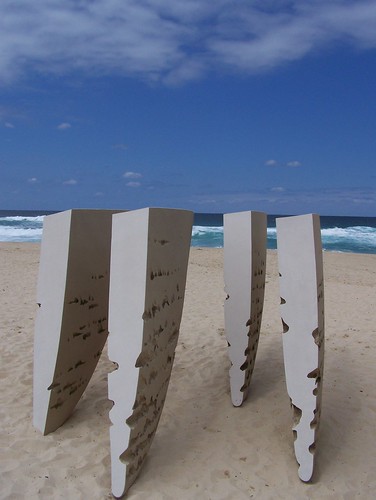
Took this at Sculpture by the Sea in November. Entered it a contest there, was one of the five finalists for the day. But I didn't win. Dang it.
Labels: art, Australia, photography, sculpture
Waiting at home when we got back from Australia. 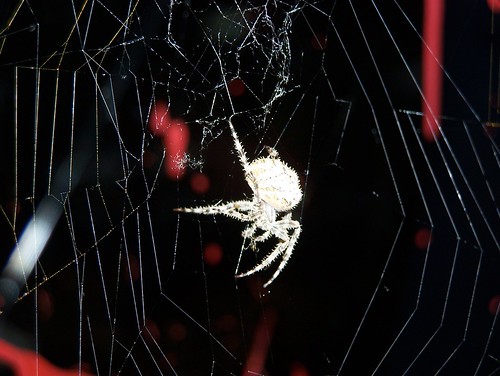
Small-marble sized body.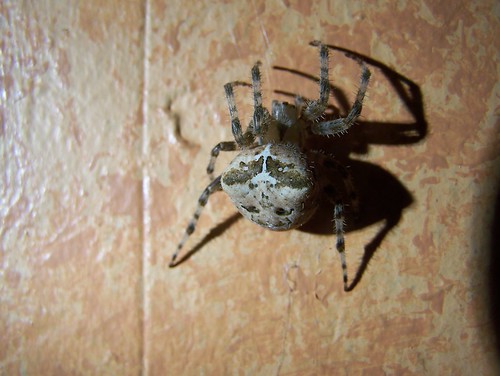
With a funnel-like core in its web. 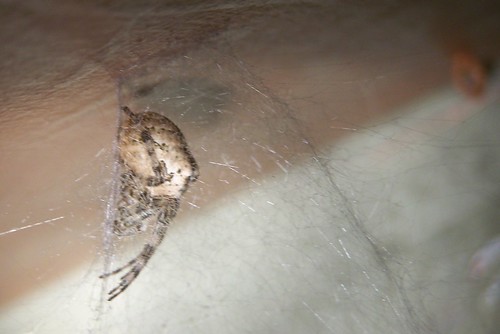
I don't know what kind of spider this is. Anybody?
Walking through the suburbs of Sydney one night in October I heard this "ooo ooo ooo" sound:
Too dark to see, I pointed the camera at the sound and snapped: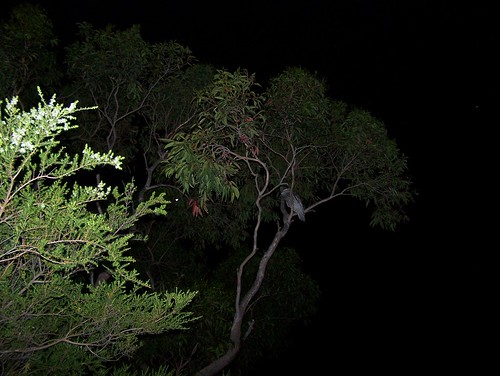
I got lucky. It was a Tawny Frogmouth, probably about 16 inches from tip of the tail to head.
Here's a closer look: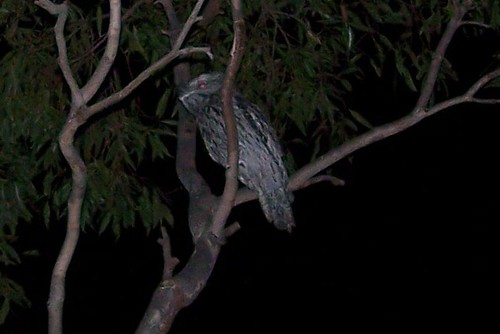
More here. And more images of the messy-face Frogmouth here.
Took this photo at Hans and Kellie's house in Dee Why. It's a shark egg. They lay them near kelp beds and the eggs get lost and tangled up therein and so are protected from the eight gazillion things in the ocean that would love to eat them.
Who knew?
You can find the dried up and hard shells, if you're lucky, washed up on certain beaches. 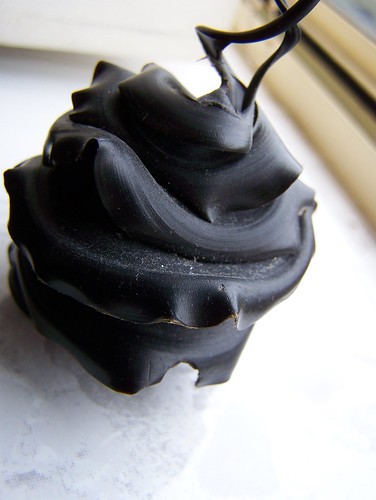
At the top you see the beginning of the long curly stringer that comes off the top of the egg - about seven inches long. It allows the egg to attach to the kelp. We didn't know what kind of shark it came from, but a little googling tells me it may be from a Crested Horn Shark. Here's the shark with its horns. And this is cool.
Bonus: This one never "hatched." You can feel the weight of the little shark embryo inside.
I've already had two people ask me, "Where the heck are the boxing kangaroos?" So here they are again.
The boxers were the very first post on this blog just a few weeks ago. I guess I'll have to put it up on a regualr basis. I'll be putting up an edited version soon too; take out some of the Blair Witch parts.
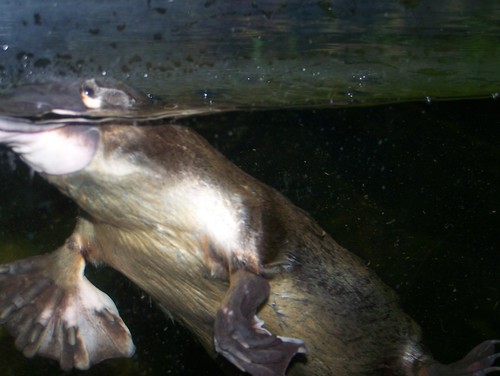
October, 2006.
Platypus (Ornithorhynchus anatinus) surfacing, Manley Aquarium.
I could write all day about these little buggers, so don't get me started. (I'll do that some other day.) I wanted so much to see one in the wild and spent a fair amount of time sitting by the side of creeks and streams and drainage ditches and what have you. The Aussies thought it was hilarious. The great majority have never seen one—even in a zoo. I finally met two people in a pub in Gunning who had actually seen platypuses in the wild. They saw them west of Sydney, beyond the Blue Mountains even.
I'll be there.
This guy, along with another that day, was very frisky and swimming and rooting in the aquarium floor and even jumped out of the water and onto the "beach" for a little while. Truly cute and bizarre. Big yellow eyes and sleek, brown, silky fur. Fast, wassly swimmers. Just beautiful. I'll put up some video of them soon. And some day I'll click here.
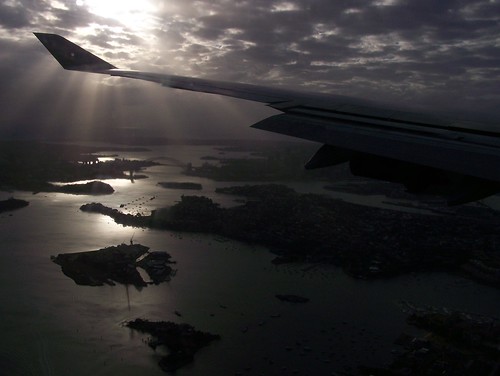
October, 2006
Under the wing, under the sun, you can see the Sydney Harbor Bridge, looking straight out the harbor out to the Tasman Sea.
I'm cheating here. I had these photos up at another site I run...but that's another story.
Brothers and sisters, the head of our cousin the hellgrammite as seen under a scanning electron microscope: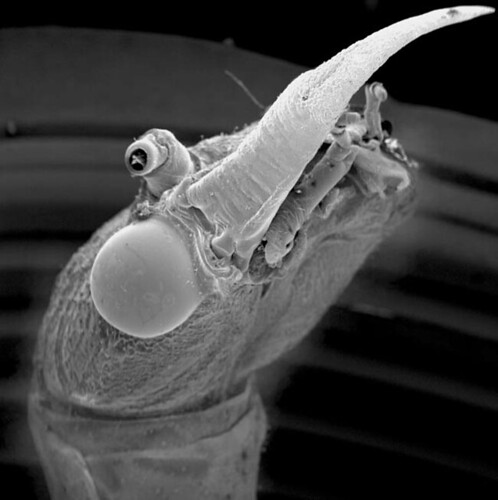
I found this on the the hellgrammite page of the Web site of the Stratford Landing Elementary School in Fairfox County, Virginia. They give credit to Uglybug.org.
I've gotta get out of here, so I'll just leave you some photos to drool over. Here's another view of the head: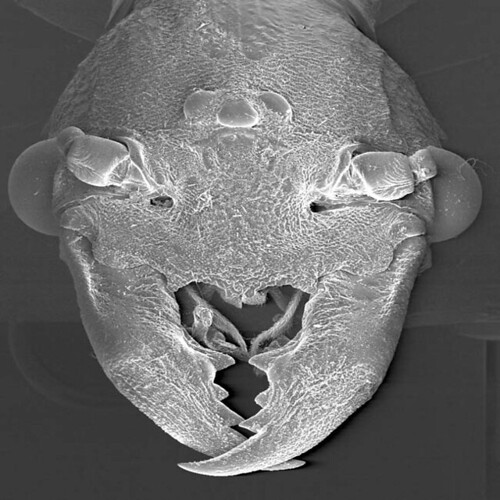
And here's a view of the the head of what the hellgrammite turns into: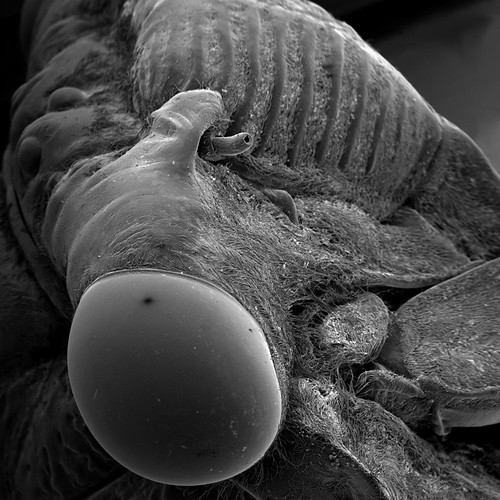
At the bottom of this page, if you scroll down all the way to the bottom, you'll see a thing that says, "Subscribe to: Posts (Atom)." I have no idea how that works. Maybe one of yu smart people do.
Anyone can leave a comment. If you're not familiar with commenting, underneath each post is the word, "Comments." After that is the number "0". (You get the drift.) Click on "Comments" and it'll give you a box where you can let me know what a fabulous stie this is, what side of my head I should part my hair on, who's gonna win the Ashes, or what have you.
First commenter gets a free copy of my CD. Makes a great gift for someone you really don't like.
UPDATE: We have a winner. We here at Boxing Kangaroos are happy to announce that Anonymous is the winner of one CD from me. Conratulations, and enjoy.
UPDATE II: I didn't mean to say "conRATulations. Honest.
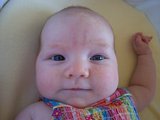
Photo by Dave Hampton
Labels: Animals, babies, Dave Hampton, music, Sage Meadows, The New Autonomous Folksingers
Crocodile basking in the setting sun in the shallows of the South Alligator River, Kakadoo National Park in the Northern Territory, Australia. Photos taken from a boat, October, 2006.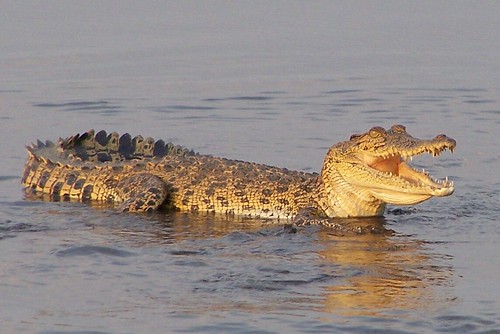
Photo by Me
Labels: Animals, Australia, crocodiles, Kakadoo, Northern Territory
East of Canberra got out of the car for some reason or other, saw this little guy not far from the road digging a little hole. I don't know what type of lizard he is. I'll try and find out.
Look at the back legs on that sucker.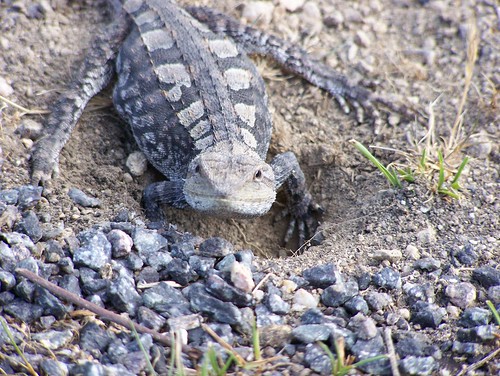
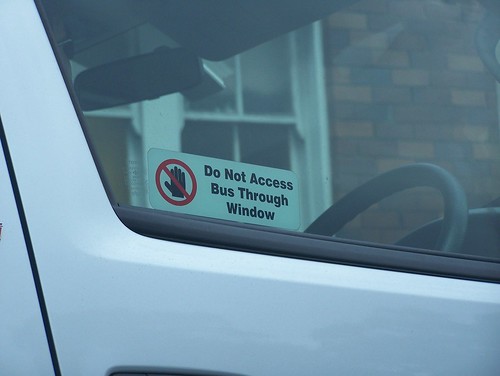
There was a bad feeling in the genes of the universe on the day this sign was deemed necessary.
This story and its associated video, and the story of its rise to internet stardom through YouTube, make it all seem kinda silly. But biologist David Scholnick is doing important work.
Labels: Animals, global warming, research, shrimp
From a recent trip to Australia and the Northern Territory: The Comb-crested Jacana, according to the very knowledgeable and perfectly-talkative guide on the South Alligator River in Kakadoo National Park (part of the Yellow Waters cruise), has the longest feet, per bird size, of any bird in the world. Allows in to "walk on water."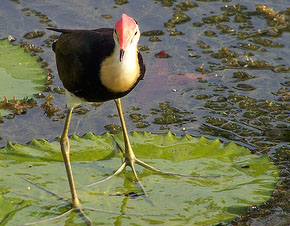
Labels: Animals, Australia, birds, Northern Territory
I didn't take this photo, but I love this photo. It was taken by one Ken Catania, assistant professor of biological sciences at Vanderbilt.
I used to find Star-nosed moles while scrummaging in the woods and marshes on hands and knees when I was just a good kid in Western New York.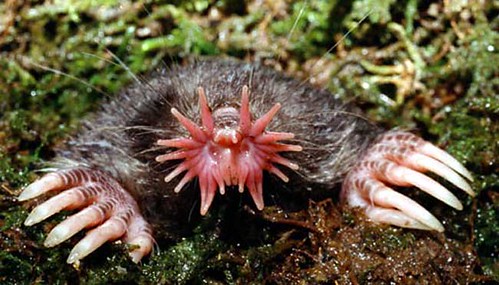
Seeing that makes me think everything is going to be okay.
The first post on this blog is, oddly enough, kangaroos. They're boxing.
We'll have other cool stuff like this for your marsupugulistic and other interests as we get cool stuff in.
This was taken in Canberra in October, 2006.
Labels: Animals, Australia, kangaroos, marsupials, video